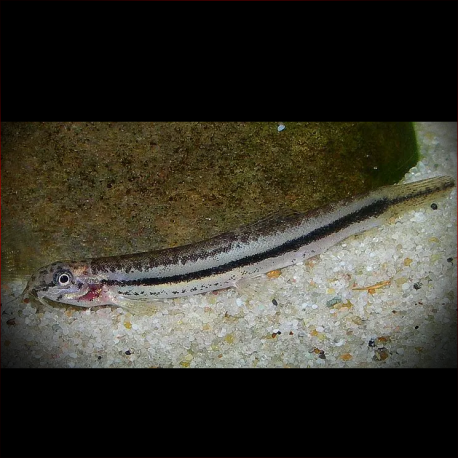More info
Datasheet
| Minimum Tank Size | 40 litres / 10.57 US gallons |
| Maximum Size | 6.0cm / 2.36inches |
| Temperature | 26°C / 78.80°F - 26°C / 78.80°F |
| Hardness | 1.01dgH / 18ppm - 10.03dgH / 179ppm |
| pH | 6.0-7.5 |
General Description
Lepidocephalichthys sp. 'LE02' is a small fish species, with a maximum size of around 6.0cm, belonging to the family Cobitidae under the order Cypriniformes. Its classification is yet to be confirmed, with distinct features resembling both L. alkaia and L. guntea. This species of loach has been identified alongside an undescribed dwarf Channa species and has been known to exhibit characteristics unique to the Cobitidae family, such as sharp, motile sub-ocular spines that are displayed when stressed.
Aquarium Setup
To create an ideal habitat for Lepidocephalichthys, a tank size of a minimum of 40 litres is suggested. The setup should include a soft, sandy substrate to accommodate the fish's burrowing behavior. It is advisable to add water-worn rocks, driftwood branches, and tree roots to provide hiding spots and shaded areas. Maintaining dim lighting unless for plant growth, and adding leaf litter for a natural feel is recommended. High flow rates should be avoided, and proper tank coverage is essential to prevent jumping, which is common among loaches.
Behaviour
- Lepidocephalichthys spp. are generally peaceful in nature, showing no signs of aggression towards tankmates. These fish thrive when kept in groups of 4 or more, especially with conspecifics. The presence of fishes occupying the upper water column can help reduce their timid behavior, as they interpret the absence of such fishes as a sign of danger. While they are not known to harm other tankmates, they may prey on eggs or fry if available in the aquarium environment.
Feeding and Diet
In their natural habitat, Lepidocephalichthys are micropredators that feed on insect larvae and small crustaceans sifted from the substrate. When kept in captivity, they readily accept sinking dried foods but should also be provided with regular meals of small live or frozen foods such as Daphnia, Artemia, and bloodworms to meet their nutritional requirements.
Reproduction & Dimorphism
There is limited information available regarding the reproductive behavior of Lepidocephalichthys in captivity, but it is assumed they are seasonal spawners in their natural habitat. Male Lepidocephalichthys can be distinguished by their enlarged pectoral fins, with fused innermost rays forming a lamina circularis. Adult females are typically heavier-bodied compared to males.
Habitat and Distribution
These loaches are commonly found in shallow, slow-moving sections of streams, freshwater swamps, oxbows, and paddy fields. Their habitats are usually heavily vegetated with soft mud or silt substrates, often experiencing fluctuations in water clarity and depth seasonally. Lepidocephalichthys sp. 'LE02' was reportedly collected in the Buxa Tiger Reserve, Jalpaiguri District, in northern West Bengal state, India, alongside other unidentified species.


